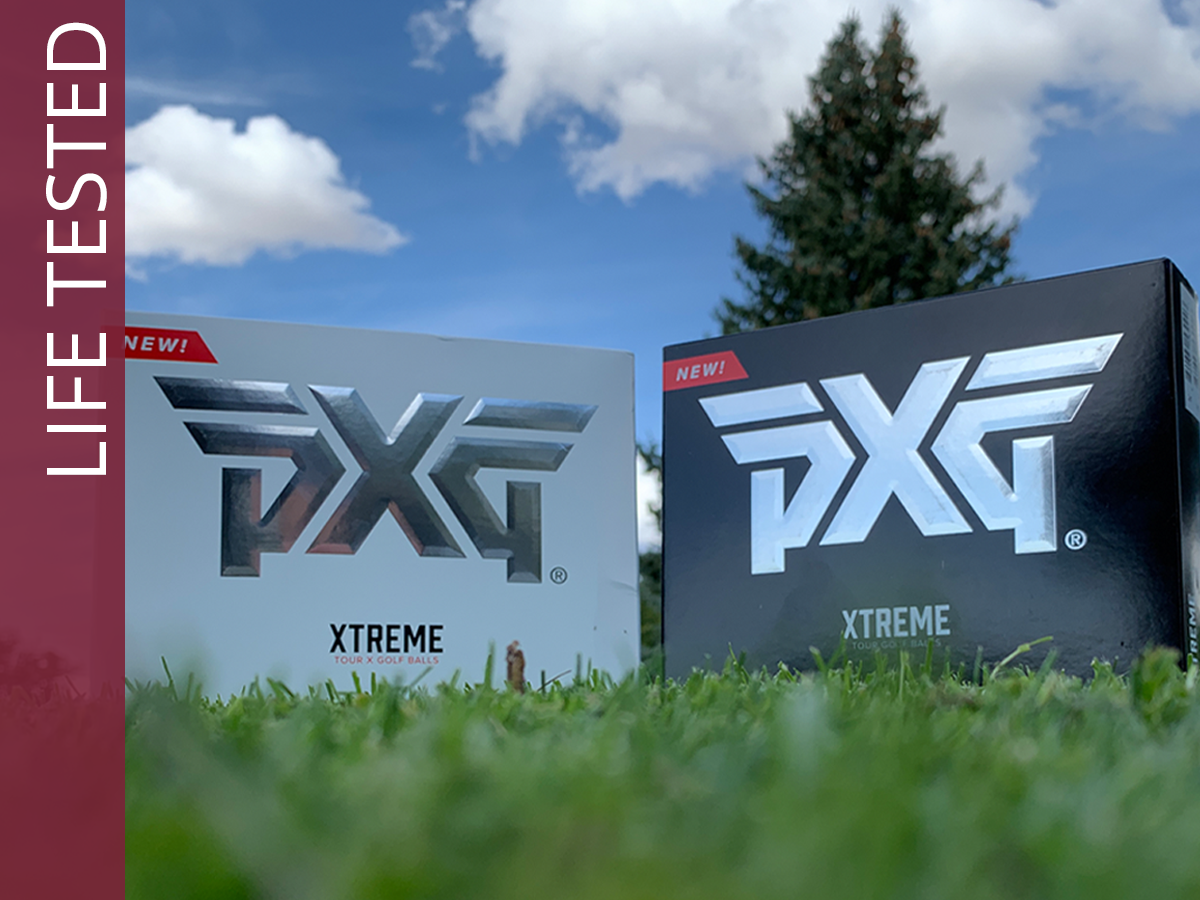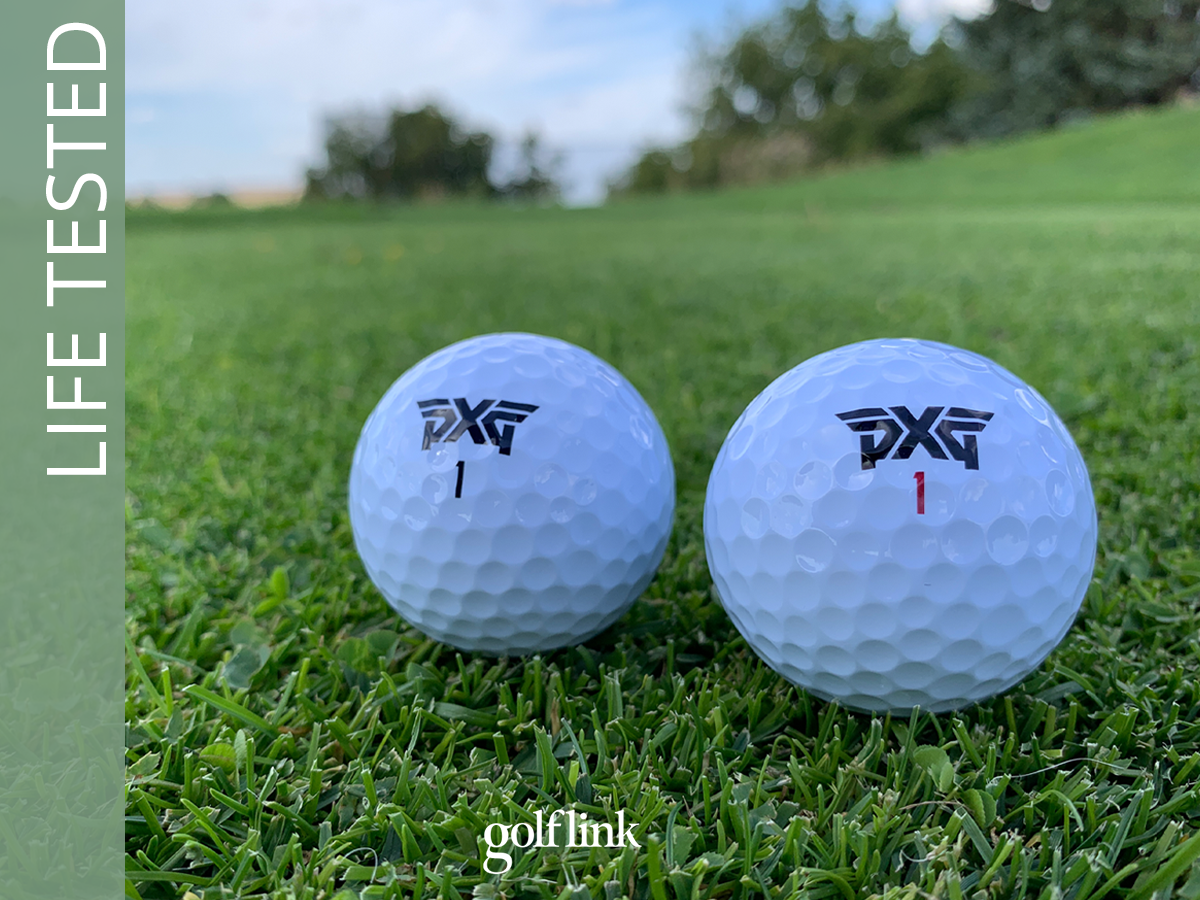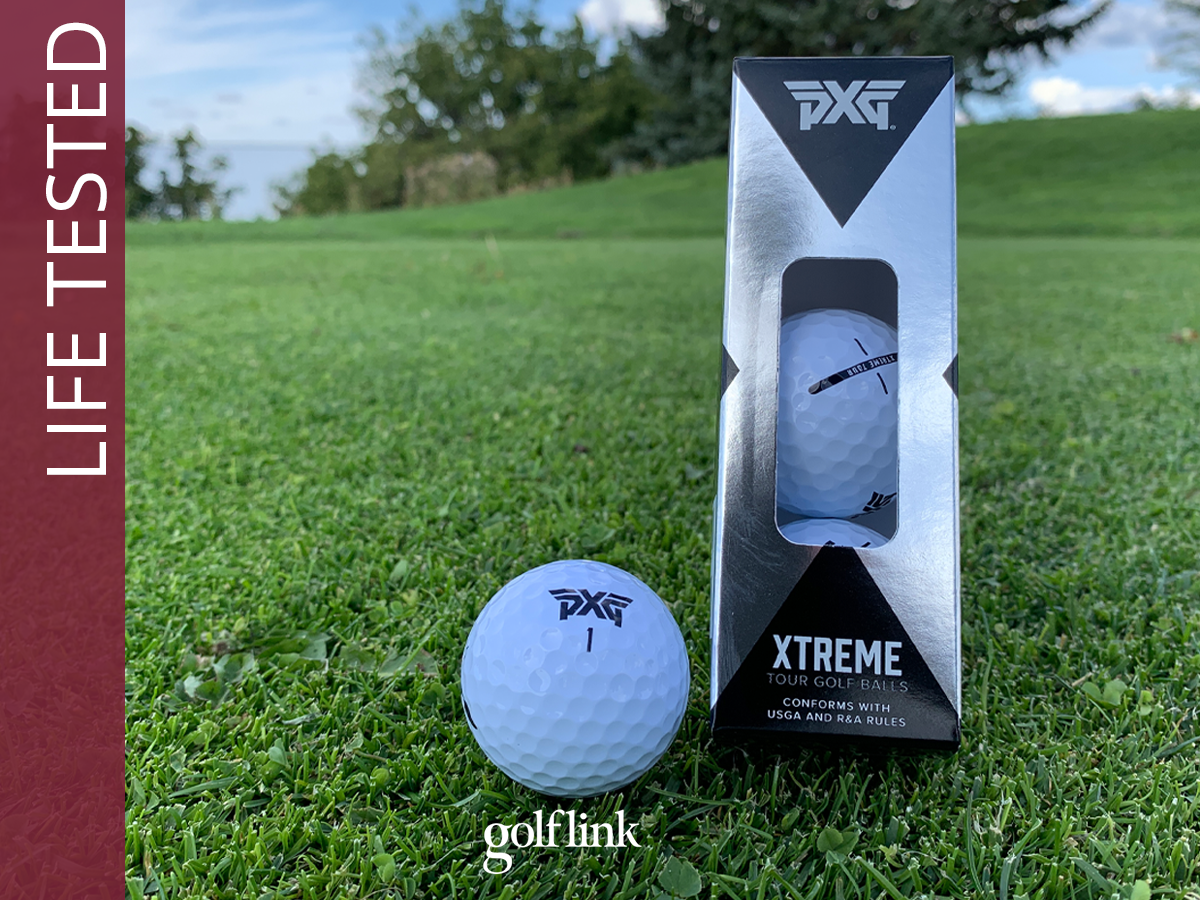PXG Xtreme Tour vs. Tour X Golf Balls: Life-Tested Review
Check out how these PXG golf balls perform and which one we recommend for your game

It took 10 years for PXG to release its first golf ball, and less than two years to drop its second iteration. PXG added the “Tour” label to its Xtreme golf balls, releasing the Xtreme Tour and Xtreme Tour X golf balls in September 2024 to follow up its debut Xtreme ball from 2023.
The new balls feature a more durable cover and the same bright white finish that the Xtreme was known for.
While both the Xtreme Tour and Xtreme Tour X are 3-piece, urethane-covered balls that check-in less than the most expensive tour balls out there ($49 for a dozen or $99 for 3 dozen), there are a few differences between the two new PXG balls that you should consider before deciding which one to play.
I put both the PXG Xtreme Tour and Xtreme Tour X to the test on and off the course to find out just how they stack up to each other, and which types of players would fit best into each. Find out what we learned in our complete life-tested review.
How We Tested PXG Xtreme Tour & Xtreme Tour X Golf Balls
I consider myself a do-as-I-say-not-as-I-do player when it comes to golf balls. I strongly recommend picking one golf ball and playing it exclusively, but I am notorious for changing up my golf ball every month or two.
Part of that is because I’m often testing different balls to give you these unbiased reviews, and part of that is because I’ve become so convinced of a golf ball’s impact on one's game that I always believe there’s a better ball for my own game out there somewhere.
The upside of this curse (curse is a bit dramatic but you get the picture) is that I’ve developed the ability to recognize subtle differences between golf balls better than I ever thought I could.
To uncover the subtle differences between these two new PXG golf balls, I played them both on the course and compared them head-to-head at the short game area at my home course.
PXG Xtreme Tour & Tour X Golf Balls Takeaways

SHOP PXG
Price: $49/dozen
Construction: 3-piece, urethane cover
I must admit, I didn’t study PXG’s claims or player profiles on either of these balls before testing and comparing them. Instead, I went straight into testing both of them to see if I could tell any differences between the balls for myself first.
In that testing, I noticed the Tour X churned out more spin through the bag. Short game shots checked up a touch quicker and stopped a little shorter, while shots off the tee and with irons curved slightly more.
PXG’s robot-testing data – a much more consistent and scientific data set – confirmed my findings.
To be honest, both are good balls, and if you want to give either a try, my recommendation is this: if you want the ball to fly a little straighter off the tee, try the Tour, and if you prefer to work the ball more with your full swing clubs, try the Tour X.
I know they say to start with the short game when selecting a ball, and that’s sound advice, but even though the Tour X produced slightly better short game control and spin, the Tour still performed exceptionally well around the greens, for me at least, and I don’t think you’ll have any problem controlling either around the greens.
PXG Xtreme Tour vs. Xtreme Tour X
Here’s how the PXG Xtreme Tour and Xtreme Tour X compare to each other. It’s important to note that these comparisons are relative to one another, and the actual discrepancies between the two balls are relatively small.
For example, we describe the trajectory of the two balls as “Penetrating” and “Higher” to illustrate which one should apex higher. However, the actual difference in apex with a 9-degree driver at 100 mph is about four feet. Similarly, the spin discrepancy between the mid-spin and mid-high spin profiles is less than 250 rpm with a 7-iron.
Unless you have world-class consistency in your launch characteristics, I doubt most players would notice the difference just by watching the ball flight. Nonetheless, understanding these nuances can help you select the better ball for your game.
|
Xtreme Tour |
Xtreme Tour X |
|
|
Price |
$49/dozen |
$49/dozen |
|
Construction |
3-piece urethane cover |
3-piece urethane cover |
|
Distance |
Long |
Longer |
|
Feel |
Softer |
Firmer |
|
Spin |
Mid |
Mid-High |
|
Trajectory |
Penetrating |
Higher |
Overview
Both balls are 3-piece, urethane-covered balls. Some brands, Titleist for example, offer a 3-piece and 4-piece version of their tour-level balls, but PXG opted to differentiate these balls in other ways.
Regardless of which version you choose, they cost $49 per dozen or $99 for three dozen, which is on the low end of the industry standard range for a tour-level urethane-covered ball, about five dollars less than premium offerings from Titleist and Callaway when buying one dozen.
The PXG Xtreme Tour is available in white and yellow versions, while the Tour X exclusively comes in white.
Distance

PXG Robot Testing (9° Driver at 100 mph)
Xtreme Tour: 282.3 yards
Xtreme Tour X: 284.8 yards
In my on-course testing, I hit the Xtreme Tour X slightly farther with driver than when I played with the Xtreme Tour. However, it was a small sample size, course conditions were not identical, and the difference, in my opinion, was negligible.
Yes, this is consistent with PXG’s robot testing, which showed the Tour X produced 2.5 yards more total distance from driver in a controlled environment, but unless the other characteristics of the ball fit your needs, I’d be cautious about selecting a ball based solely on chasing every last yard off the tee.
Feel
Xtreme Tour: Softer
Xtreme Tour X: Firmer
PXG highlights feel as one of the differentiating areas between the two balls. The Xtreme Tour is the softer option, while the Tour X is firmer.
I’ll be the first to admit that I’m not the authority on how a ball feels – I pay more attention to what it does in the air – but I didn’t leave my side-by-side testing preferring one feel over the other, and after playing rounds with the two balls a week apart, I certainly couldn’t have told you with any confidence which one was softer based on my on-course testing, so I’m happy to leave it to the folks who designed these balls to tell you which ball favors which feel.
Spin & Trajectory
PXG Robot Testing - Spin (RPM): SW-7i-D
Xtreme Tour: 7474*-5160-2440
Xtreme Tour X: 7696*-5402-2511
*Sand wedge spin is based off 60-yard shot
Spin and trajectory are the areas where I noticed the most separation between the two balls, and for me personally, it’s the category that determines which ball I’ll choose to use moving forward.
I feel more confident playing a ball that flies straighter, and I certainly hit the Xtreme Tour straighter when I compared the two on the golf course. The difference was noticeable, and even though there were other variables at play, that result aligned with PXG's robot testing of each ball, so I have to chalk at least some of that up to the balls.
PXG Robot Testing - Apex: 7i-D
Xtreme Tour: 77.9’-85.6’
Xtreme Tour X: 75.1’-89.7’
Even though the slightly lower spin of the Xtreme Tour, compared to the Tour X, trickles down to the short game, I still felt in control of the Xtreme Tour around the greens.
If you’re looking for maximum short game control, or you rely on the ability to work the ball (or both), then the Xtreme Tour X is a better option for you.
If you’d rather see the ball fly straighter, I don’t think you will sacrifice much short game performance by opting for the Xtreme Tour to increase accuracy.
Which Ball Should You Choose?

After thoroughly testing both of the new PXG golf balls, I can confidently recommend them as quality golf balls for any players in the market for a new premium (urethane-covered) ball.
Here is, in my opinion, all you need to know to decide which of the two would be better for your needs. Both balls produce all the distance you need and are controllable around the greens. The Tour flies a little straighter, and feels a little softer, while the Tour X flies a little farther, is more workable, and offers a little more greenside control.